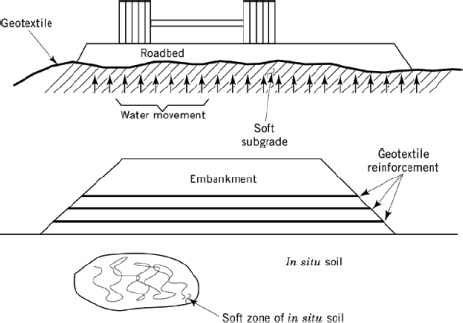

Geotextile containers are large geotextile (typically a woven material) elements containing from about 200 to 600 m3, which are dropped through water from a split barge (installation depth should allow for this). emerged or submerged), and conveniently shall be hydraulically filled.Ģ. Geotextile tubes are typically suitable for applications above water and under water to about 6m water depth (i.e. When filled with sand or other granular materials the system acquires a pillow form. The tube diameters can vary from about 1.6 to 5 m and the length may vary from 25 to 100 m depending on project specifics. They are delivered as prefabricated elements to the site, with a number of inlet/outlets for filling. Geotextile tubes are water permeable, sand-tight geotextile (either woven, non-woven, or composite).

This article is based on the work presented in these references.įigure 1: Geotextile tube application at the beach of Ofir, Esposende, Portugal (photo: Luciana das Neves).įor clarity, the following definitions apply in this article:ġ. University of Porto in Portugal (see, e.g., das Neves et al.DELTARES in The Netherlands (see, e.g., van Steeg and Vastenburg and van Steeg and Breteler ).the recent past research at the Leichtweiss Institute in Germany (see, e.g., Dissanayake Oumeraci and Recio Recio Oumeraci et al.
Breakwaters woven geotextile update#
the translation into English and update of CUR-publication 217 “Ontwerpen met geotextiele zandelementen” by Bezuijen and Vastenburg, which is currently the most comprehensive manual for designing with sand-filled geosystems.the practice guideline on the application of geosynthetics in waterfront areas from PIANC.Koerner, which gives a general overview on designing with geosynthetics.As a consequence, despite some recognised advantages, the use of sand-filled geosystems as alternative to more conventional materials (e.g., rock or concrete units) is seldom considered.Įxceptions to such lack of knowledge are the books of Pilarczyk ], which has the most thorough review of the knowledge and experience on geosynthetics and geosystems in coastal engineering from the late nineties of the last century and earlier and is still the reference book on this topic.

However, their wider application is still hampered by the lack of readily available knowledge. in the core of a breakwater, groyne or seawall), in coastal areas exposed to low wave energy and/or tidal regime, on projects where there is no risk to life or assets in the event of failure, on projects with regular inspection and maintenance, and in complement to artificial sand nourishments. Experience with sand-filled geosystems worldwide has shown that they can be used effectively as hidden components (e.g. Before they have been mostly applied on temporary and emergency works. They can be filled with sand, gravel or mortar, yet only the use of sand as filling material is considered in this article.Īlthough the concept of wrapping sand in a geotextile is not innovative – actually it goes back to the 1950’s – it was only in recent decades that attention has turned to the use of these materials on permanent coastal structures. In special applications (e.g., dams), outside the scope of the present article, they can be made from water-tight geosynthetics, such as geomembranes and/or special composite systems. the geotextile-wrap around revetment constructed at the Island of Sylt in Germany, geosystem elements are generally pre-fabricated closed forms/units in four distinct types, bags, mattresses, tubes and containers. Even though there are a number of applications with open systems, e.g. Geosystems are three-dimensional elements manufactured from woven and/or non-woven geotextile fabrics. It is intended to give coastal managers, designers, contractors, and practitioners in general, insight in the applications and the limitations of sand-filled geosystems in coastal engineering and guide them forward to further reading in case more detail on their design is useful. This article provides a summary of design rules based on the existing theories as well as recommendations regarding the durability and other properties of the materials used in the manufacturing of the geosystems. Sand-filled geosystems can be used in a wide range of coastal engineering applications. 6.3 Scour development around sand-filled geosystems.6 Hydraulic design criteria for sand-filled geosystems.5 Normative references and material aspects.4.2 Potential failure mechanisms and safety considerations.


 0 kommentar(er)
0 kommentar(er)
